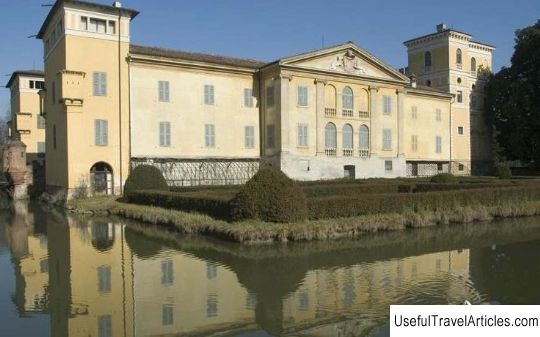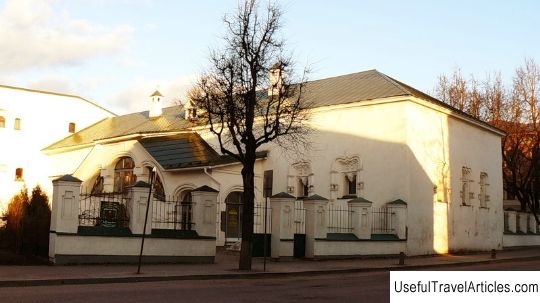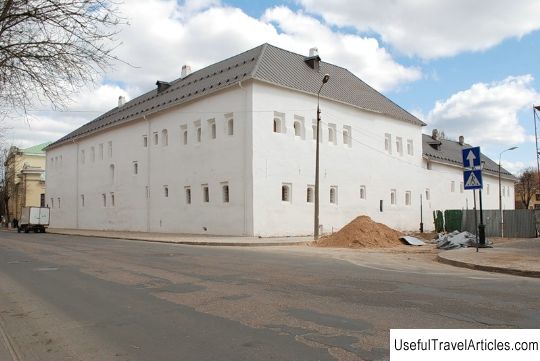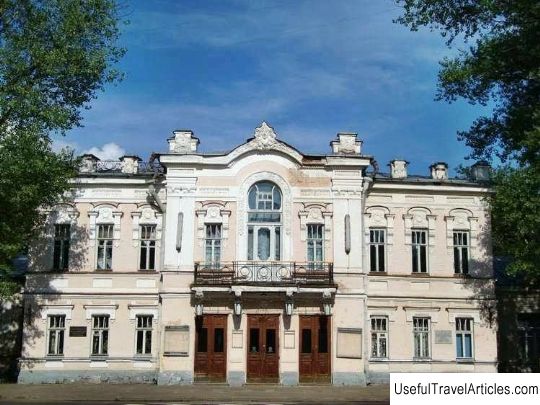Pskov Cadet Corps description and photos - Russia - North-West: Pskov
Rating: 8,3/10 (1290 votes) 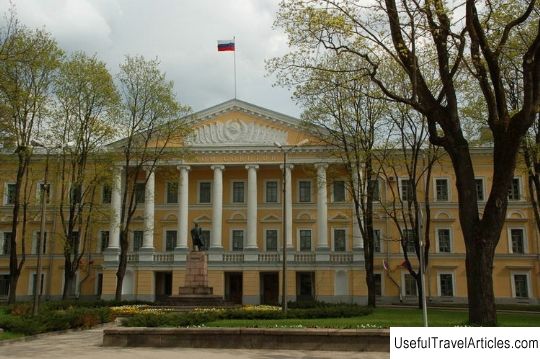
Pskov Cadet Corps description and photos - Russia - North-West: Pskov. Detailed information about the attraction. Description, photos and a map showing the nearest significant objects. Photo and descriptionAll residents of the city of Pskov are well aware of the building located on Nekrasov Street, which was built in the 18th century. Prisoners of the Pskov prison have been building it for 10 years. Initially, the building was two-story, the main facade of which overlooked Ivanovskaya Street. At first, the building housed the governor board, chambers of the civil and criminal courts, the city magistrate, the drawing room and the archive. After the complete liquidation of the governorship, the building was renamed into the Public places, which were located in it until 1811. During the Patriotic War of 1812, Pskov became the closest front-line rear of the Russian troops. A military hospital was equipped in the premises of the Public Places, while, the first floor was occupied by ancillary services of the hospital, and the second floor was occupied by hospital wards and staff rooms. After the end of the war, by order of Emperor Alexander I, the building was assigned to the Department of the Engineering Department under the Ministry of War, after which it was radically rebuilt. The task of the reconstruction was the placement of the orphan department of the garrison school. The school, opened in 1783, did not have its own building and was located in an old house. In May 1824, the Orphan's Department was transferred to visit the former Public Places. In December 1827, the Orphanage Department was renamed the Cantonist Military Half-Battalion. In 1835, Emperor Nicholas I himself visited the cantonists, and the result of such a visit was the appearance of an optical telegraph in the city of Pskov. The Pskov telegraph station was the main component of the world optical telegraph line, which was opened between Warsaw and St. Petersburg in 1839. After a large number of transformations and reorganizations in 1882, the Pskov Cadet Corps began its work on Governor Street (now Nekrasov). The total staff of pupils was 400 people, although only 30 "supernumerary" students were allowed to be admitted. The majority of the pupils were housed in the building, and only 3% could live at home. As for the estate, the actual majority of the students belonged to the families of officers, nobles and officials of the military department. During the years from 1882 to 1918, 1,444 cadets graduated from the walls of the cadet corps, most of whom entered various military schools. In terms of academic performance, as well as the quality of teaching, the Pskov Cadet School had very high indicators among schools and the army, because the corps teachers were professional army officers with solid military service. It was the education in the corps that could determine the position of cadets in the field politicians, as well as their negative attitude towards the revolutionary actions of 1905 and 1917. Cadet students openly demonstrated loyalty to the monarchist views, as well as complete obedience to the throne. In 1917, the cadet corps was evacuated to Kazan. After the participation of the cadets in the action of the cadet uprising, they were able to reach the city of Irkutsk, while the elders were allowed into Kolchak's army. In 1920, an uprising of the Reds took place in Irkutsk - just at this time the Pskov Cadet Corps ceased its work and existence; numerous cadets were forced to settle on various fronts of the civil war. After the October Revolution, the building housed Soviet military institutions, as well as the headquarters at the Northern Front. In the winter of 1918, the Military Revolutionary Headquarters of the city defense of Pskov and the point of preliminary registration of volunteers in the ranks of the Red Army were located here. Once the civil war ended, the building was also in the hands of military institutions. After a while, provincial parties and the Komsomol, the provincial executive committee, as well as a number of other directorates and departments began to come here. The cadet corps that previously existed here began to be called the "House of Soviets". At the moment, the house of the former Governor's office houses the administration of the Pskov region under the leadership of the governor, as well as the regional Pskov Assembly of Deputies.    We also recommend reading Izborsk fortress description and photo - Russia - North-West: Izborsk Topic: Pskov Cadet Corps description and photos - Russia - North-West: Pskov. |
